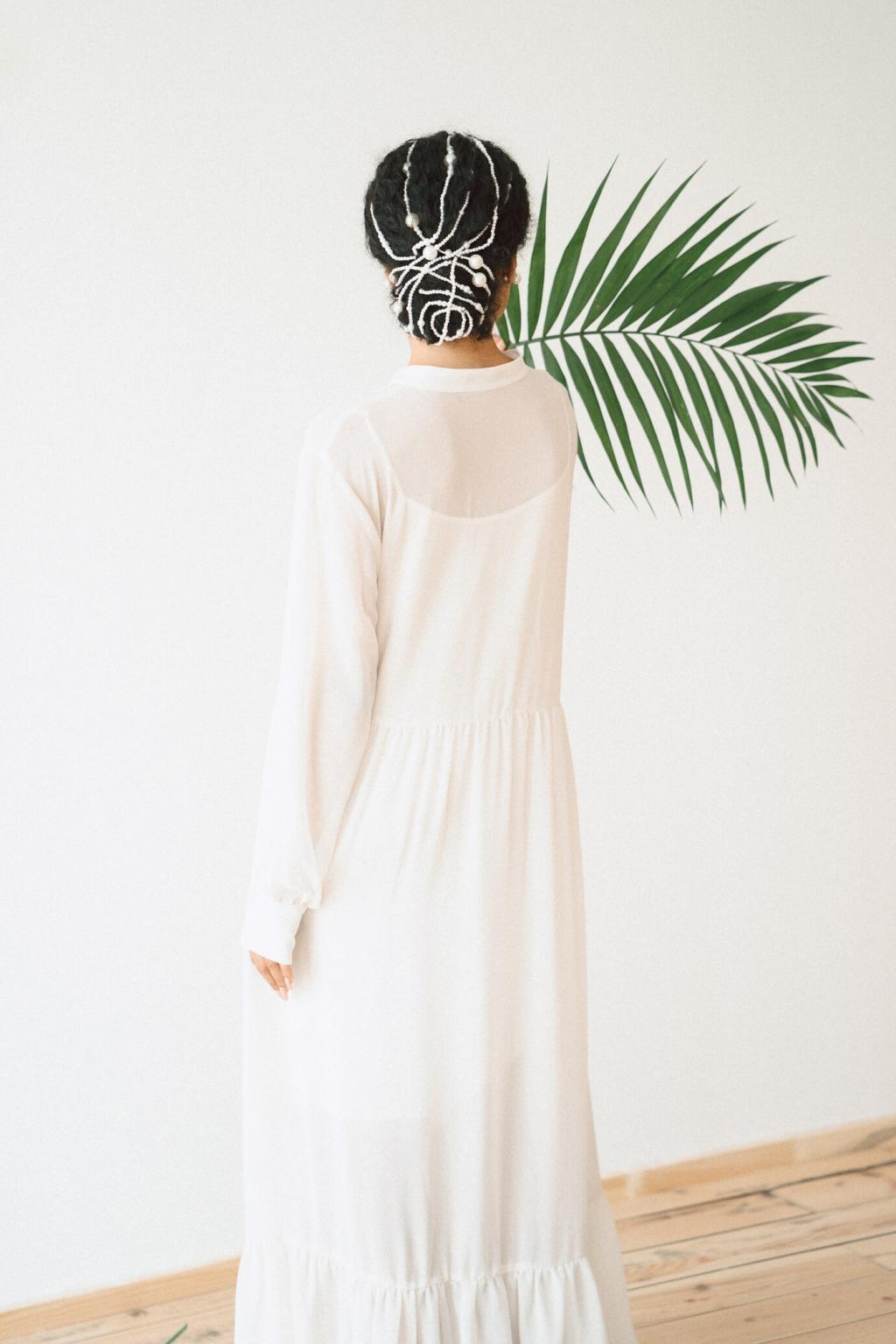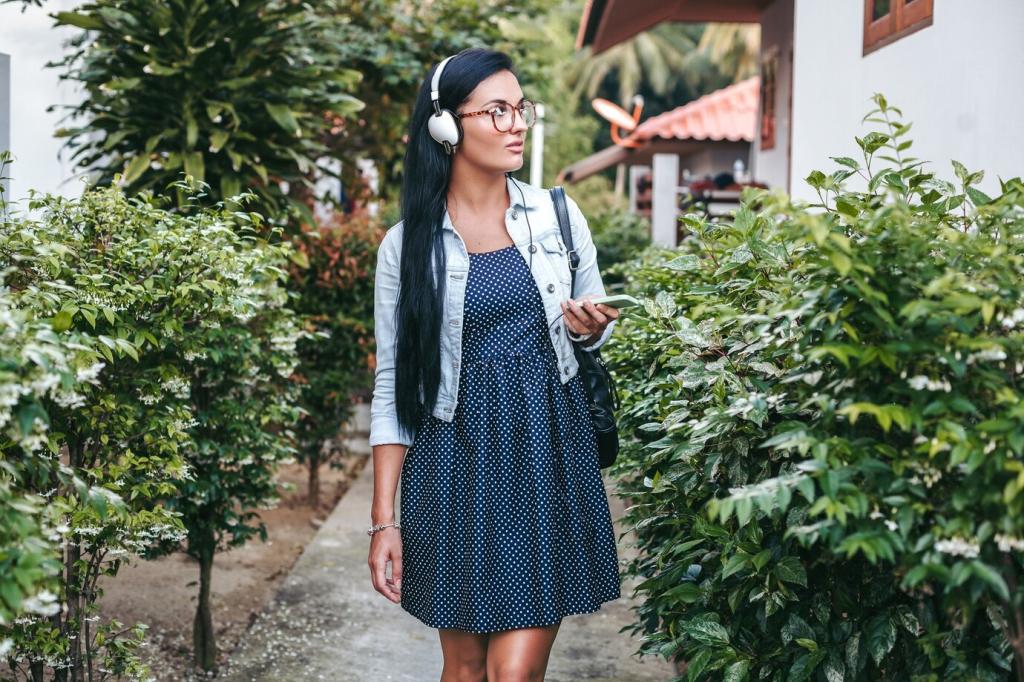Sustainable fashion in 2023 is more than a passing movement—it’s a dynamic transformation of the entire industry. This year, designers, brands, and consumers alike are prioritizing eco-conscious choices in materials, production, and consumption. As sustainability shifts from niche to necessity, innovation is reshaping what we wear, how it’s made, and the impact it leaves behind. The following sections highlight the key trends and approaches defining sustainable fashion this year, revealing a future where style and responsibility coexist seamlessly.
Regenerative Materials Revolution
Biodegradable textiles are changing the world of fashion by breaking down naturally after use, reducing landfill waste and microplastic pollution. Brands are investing in research to create new fabrics from natural sources such as mushrooms, algae, and hemp. These innovations ensure that clothing returned to the earth decomposes safely and quickly, minimizing long-term environmental impact. Consumers are encouraged to seek out garments labeled as compostable or biodegradable, knowing their choices support a cleaner, greener future. Biodegradable textiles combine comfort and resilience with a clear afterlife, representing a paradigm shift away from synthetic fibers that persist for centuries.


Digital Tracking Technologies
Advanced digital tracking tools like blockchain and QR codes are now integral to supply chain transparency. These technologies allow consumers to scan labels and access detailed information about a garment’s origin, processing, and logistics. Traceability tools empower shoppers to make informed choices while holding brands accountable for ethical sourcing and fair labor practices. Transparency doesn’t just reassure end users—it also incentivizes good behavior all along the supply chain. As this technology becomes standard, it helps build a culture of openness and verification in fashion.
Brand Transparency Commitments
Many leading brands have announced ambitious transparency commitments, voluntarily publishing detailed supply chain reports and sustainability data. These public disclosures include information about factory locations, labor standards, environmental impacts, and raw material origins. Transparent brands respond to consumer demand for honesty, using radical openness as a competitive advantage. Regular updates and third-party audits reinforce credibility, ensuring that published data is accurate and actionable. As more companies commit to transparency, industry-wide standards are rising and greenwashing is less able to thrive.
Consumer Empowerment Initiatives
Brands are not only increasing internal transparency—they’re also actively educating and empowering consumers to engage with supply chain issues. Interactive apps, immersive web experiences, and virtual plant tours are some of the tools used to demystify fashion’s complex logistics. These initiatives encourage shoppers to look beyond the label and consider the journey of each piece. By equipping consumers with knowledge, brands hope to foster loyalty and responsibility, creating a community that values and demands ethical sourcing. This cultural shift is crucial to the growth of sustainable fashion.
Previous slide
Next slide
Slow Fashion Movement
Artisanal Craftsmanship
Artisanal craftsmanship is experiencing a resurgence as consumers favor unique, expertly made garments over mass-produced options. Artisans use traditional, often centuries-old techniques, applying meticulous attention to detail and quality. This approach highlights not only the value of skill and heritage but also the ecological advantages of hand-made, small-batch production. Garments crafted by artisans tend to last longer and carry personal significance, encouraging their owners to cherish and care for them over time. The slow fashion movement sees artisanal work as the antidote to the excess and disposability of mainstream trends.


Seasonless Wardrobe Concepts
Seasonless wardrobes, focused on essential, versatile pieces, are gaining popularity among those seeking sustainability and simplicity. Rather than buying into fleeting trends, consumers build collections of garments designed to be worn year-round. Designers are responding by creating timeless silhouettes in adaptable fabrics, allowing for seamless transitions between seasons. This approach not only minimizes purchases and waste but also encourages a more intentional, considered relationship with fashion. Seasonless wardrobes shift the focus from quantity to quality, redefining what it means to be well-dressed.
Regional Artisan Collaborations
Fashion brands are actively collaborating with local artisans and craftspeople to produce unique, high-quality collections. These partnerships preserve traditional techniques and empower small communities by providing fair, direct employment opportunities. Regional collaborations celebrate cultural heritage, fostering pride and distinctiveness in the final product. By investing in local talent and resources, brands strengthen communities and create pieces with emotional and cultural resonance, moving away from faceless mass production lines.
On-Demand Manufacturing
On-demand manufacturing models use digital technology to produce garments only after they’ve been ordered. This approach eliminates overproduction, financial risk, and unnecessary waste, allowing for greater customization and flexibility. Consumers benefit from personalized fashion while brands ensure resources are never wasted on unwanted stock. On-demand production systems have become more accessible to smaller brands, democratizing innovation and bringing efficiency and sustainability together in a new, customer-focused way.
Supporting Local Fashion Startups
In 2023, there is growing support for small, independent fashion startups that prioritize ethics, craftsmanship, and local resources over scale. These emerging brands often focus on sustainability at every stage, from sourcing to production to distribution. Consumers are increasingly attracted to the authenticity and transparency of these creators, seeing their purchases as investments in community and conscious values. Supporting local startups is not only beneficial for the environment but also crucial in nurturing a diverse, resilient fashion ecosystem.
Eco-Friendly Dyeing and Finishing
Plant-Based Dyes
Plant-based dyes made from flowers, roots, and other botanical sources are becoming an alternative to synthetic, petroleum-based dyes. These dyes reduce chemical pollution and often use byproducts from agriculture or food industries, further lowering environmental impact. Brands adopting plant-based colorants also highlight naturally occurring color variations, embracing tone and texture as part of a garment’s uniqueness. This approach invites consumers to appreciate natural beauty and impermanence while supporting regenerative agriculture.
Waterless Dyeing Technologies
Waterless dyeing methods such as air-dye and supercritical CO2 dyeing are gaining ground as sustainable solutions. These technologies use minimal or no water, drastically reducing the wastewater and pollution associated with traditional dye baths. In addition to conserving precious resources, waterless dyeing allows for vibrant, lasting color with fewer harmful chemicals. As water scarcity becomes an urgent global issue, brands investing in these technologies are taking vital steps toward responsible resource management and sustainable production.
Non-Toxic Finishing Processes
Non-toxic finishing processes eliminate the use of hazardous chemicals, ensuring that garments are safe for wearers and the environment alike. Instead of conventional treatments, eco-friendly options use enzymes, laser, or ozone to achieve effects like softness, wrinkle-resistance, or distressed finishes. These methods are gentler on fabrics, producing garments that maintain their integrity over time. By prioritizing safe chemistry, the industry is working to protect waterways, workers, and consumers from harmful exposures, reinforcing an all-encompassing commitment to sustainability.

AI-Powered Design and Production
Artificial intelligence is transforming how fashion collections are designed and produced. Smart algorithms analyze data to predict trends, personalize recommendations, and streamline production schedules, resulting in less overproduction and waste. AI allows brands to experiment digitally before committing to physical samples, saving materials and energy. By leveraging AI, designers can respond quickly to real-time data from consumers, making sustainable choices that match actual demand. This tech-driven approach ensures a more measured, responsive, and responsible industry.

3D Sampling and Virtual Prototyping
3D sampling and virtual prototyping replace the need for physical samples, reducing fabric waste, transportation emissions, and time spent in development. Designers use advanced software to create highly realistic digital models of garments, allowing for instant feedback and adjustments before a single thread is cut. This process cuts down significantly on material waste and trial-and-error, leading to more efficient, sustainable production cycles. As this technology becomes accessible to more brands, it has the potential to revolutionize how collections come to life.

Smart Garment Tracking for End-of-Life Management
Smart labels and embedded chips are being used to track garments from production to end-of-life, providing valuable data on usage, care, and eventual recycling or disposal. These technologies help brands and recycling facilities identify materials, sort garments efficiently, and optimize recycling or reuse. For consumers, smart tracking tools offer tips for care and repair, stretching the lifespan of each piece. This comprehensive view of a garment’s journey makes circular fashion possible and ensures that clothing is responsibly managed at every stage.
